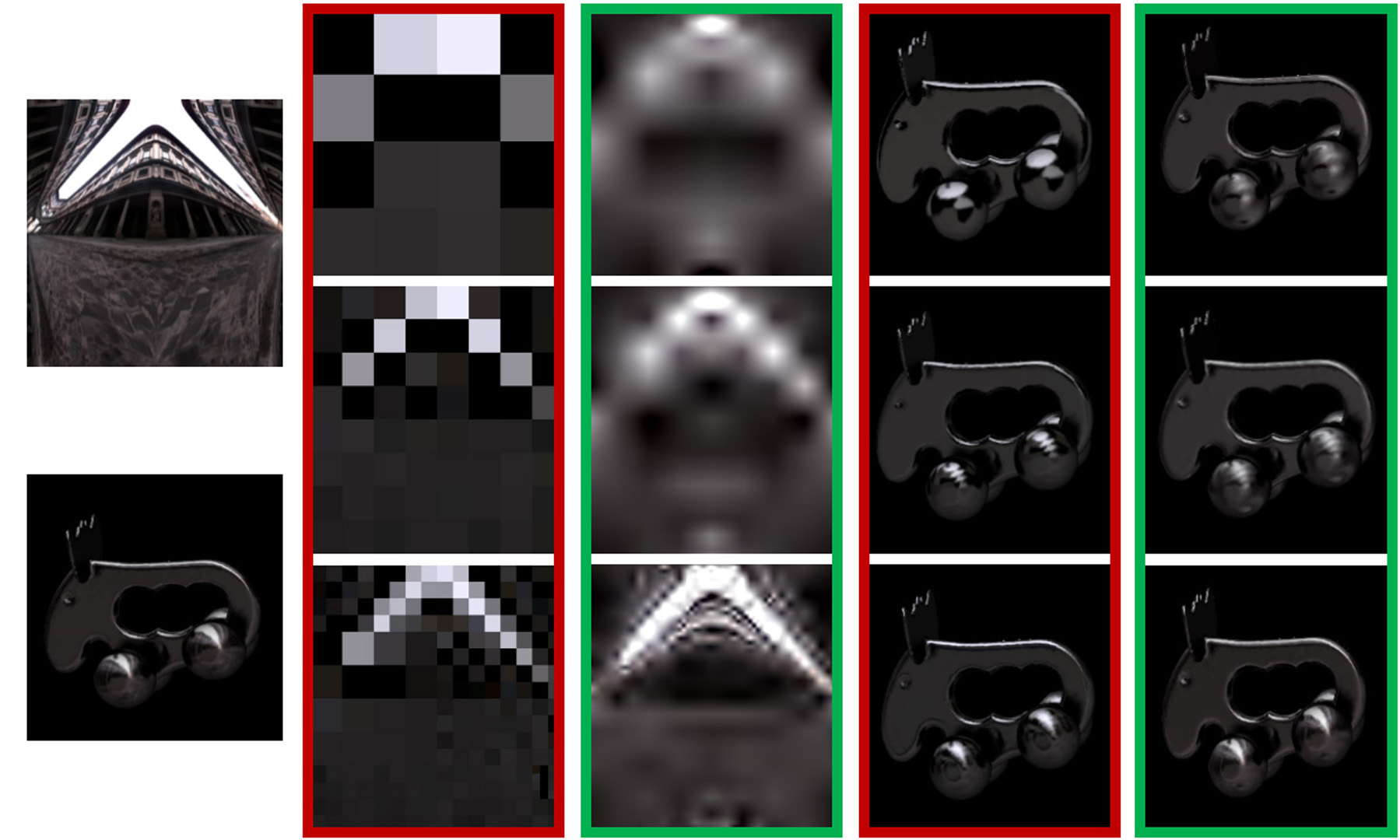“High-order Wavelets for Hierarchical Refinement in Inverse Rendering” by Michiels, Put, Haber, Klaudiny and Bekaert
Conference:
Type(s):
Entry Number: 56
Title:
- High-order Wavelets for Hierarchical Refinement in Inverse Rendering
Presenter(s)/Author(s):
Abstract:
It is common to use factored representation of visibility, lighting and BRDF in inverse rendering. Current techniques use Haar wavelets to calculate these triple product integrals efficiently [Ng et al. 2004]. Haar wavelets are an ideal basis for the piecewise constant visibility function, but suboptimal for the smoother lighting and material functions. How can we leverage compact high-order wavelet bases to improve efficiency, memory consumption and accuracy of an inverse rendering algorithm? If triple product integrals can be efficiently calculated for higher-order wavelets, the reduction in coefficients will reduce the number of calculations, therefore improving performance and memory usage. Some BRDFs can be stored five times more compactly.
References:
1. Haber, T., Fuchs, C., Bekaert, P., Seidel, H.-P., Goesele, M., and Lensch, H. P. A. 2009. Relighting objects from image collections.
2. Ng, R., Ramamoorthi, R., and Hanrahan, P. 2004. Triple product wavelet integrals for all-frequency relighting. ACM Trans. Graph. 23, 3 (Aug.), 477–487.
3. Peers, P., and Dutré, P. 2005. Inferring reflectance functions from wavelet noise. In Proceedings of the Sixteenth Eurographics conference on Rendering Techniques, Eurographics Association, Aire-la-Ville, Switzerland, Switzerland, EGSR’05, 173–182.





